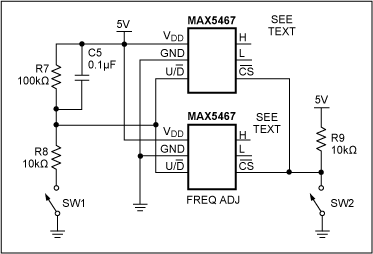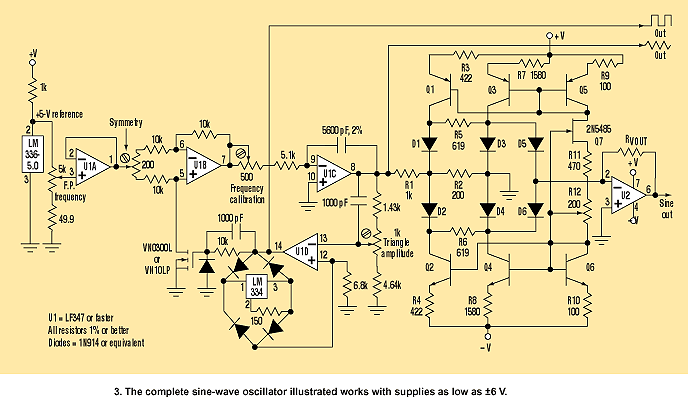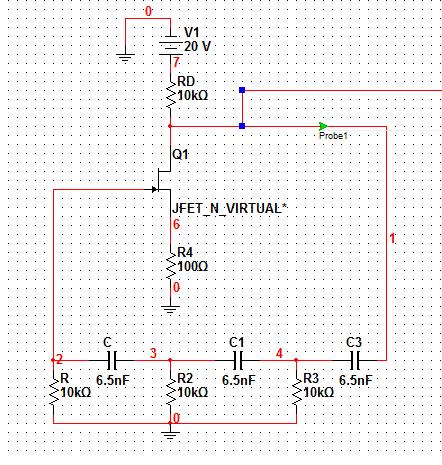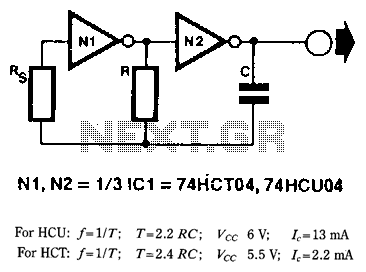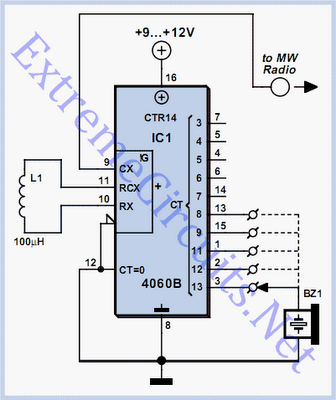
1 khz oscillator
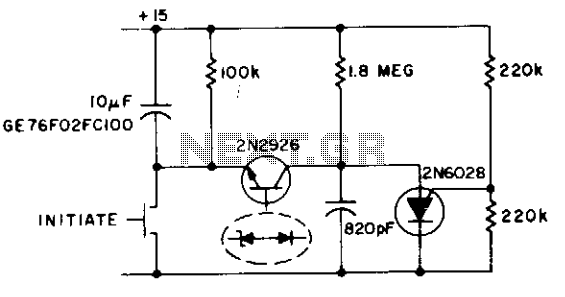
This circuit functions as both an oscillator and a timer. The 2N6028 transistor remains in an 'on' state due to the excessive holding current flowing through the 100 kΩ resistor. When the switch is briefly closed, the 10 µF capacitor charges to a maximum of 15 volts, causing the 2N2926 transistor to initiate oscillation with capacitance values of 1.8 pF and 820 pF. The circuit maintains its state when the 2N2926 zener diode undergoes breakdown once more.
The described circuit utilizes a combination of transistors and passive components to achieve its dual functionality as an oscillator and a timer. The 2N6028, a silicon-controlled rectifier (SCR), is designed to remain conductive due to the continuous holding current provided by the 100 kΩ resistor. This configuration ensures that the SCR is kept in the 'on' state until a triggering event occurs.
Upon the momentary closure of the switch, the 10 µF capacitor begins to charge. The charging process raises the voltage across the capacitor to 15 volts, which is critical for the operation of the 2N2926 transistor. This transistor is configured to oscillate, and its oscillation frequency is influenced by the capacitances of 1.8 pF and 820 pF present in the circuit. These capacitive elements play a vital role in determining the timing characteristics and frequency of oscillation.
The oscillation of the 2N2926 is significant because it allows the circuit to produce a repetitive signal that can be utilized for various applications, such as generating clock pulses or controlling other electronic components. The feedback mechanism inherent in the design causes the circuit to latch when the zener diode within the 2N2926 breaks down. This breakdown condition reinforces the conduction state of the transistor, ensuring that the circuit remains active until it is intentionally reset or interrupted.
Overall, this circuit exemplifies the integration of transistors and passive components to create a versatile electronic device capable of functioning as both an oscillator and a timer, with specific operational characteristics dictated by the values of the resistors and capacitors used in the design.This circuit operates as an oscillator and a timer. The 2N6028 is normally on due to excess holding current through the 100 k resistor. When the switch is momentarily closed, the 10 µ¥ capacitor is charged to a full 15 volts and 2N2926 starts oscillating (1.8 and 820 pF). The circuit latches when 2N2926 zener breaks down again.
The described circuit utilizes a combination of transistors and passive components to achieve its dual functionality as an oscillator and a timer. The 2N6028, a silicon-controlled rectifier (SCR), is designed to remain conductive due to the continuous holding current provided by the 100 kΩ resistor. This configuration ensures that the SCR is kept in the 'on' state until a triggering event occurs.
Upon the momentary closure of the switch, the 10 µF capacitor begins to charge. The charging process raises the voltage across the capacitor to 15 volts, which is critical for the operation of the 2N2926 transistor. This transistor is configured to oscillate, and its oscillation frequency is influenced by the capacitances of 1.8 pF and 820 pF present in the circuit. These capacitive elements play a vital role in determining the timing characteristics and frequency of oscillation.
The oscillation of the 2N2926 is significant because it allows the circuit to produce a repetitive signal that can be utilized for various applications, such as generating clock pulses or controlling other electronic components. The feedback mechanism inherent in the design causes the circuit to latch when the zener diode within the 2N2926 breaks down. This breakdown condition reinforces the conduction state of the transistor, ensuring that the circuit remains active until it is intentionally reset or interrupted.
Overall, this circuit exemplifies the integration of transistors and passive components to create a versatile electronic device capable of functioning as both an oscillator and a timer, with specific operational characteristics dictated by the values of the resistors and capacitors used in the design.This circuit operates as an oscillator and a timer. The 2N6028 is normally on due to excess holding current through the 100 k resistor. When the switch is momentarily closed, the 10 µ¥ capacitor is charged to a full 15 volts and 2N2926 starts oscillating (1.8 and 820 pF). The circuit latches when 2N2926 zener breaks down again.
